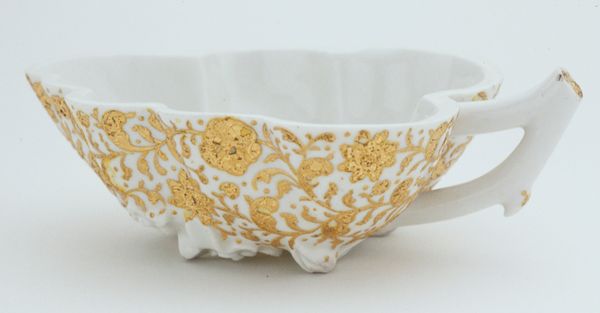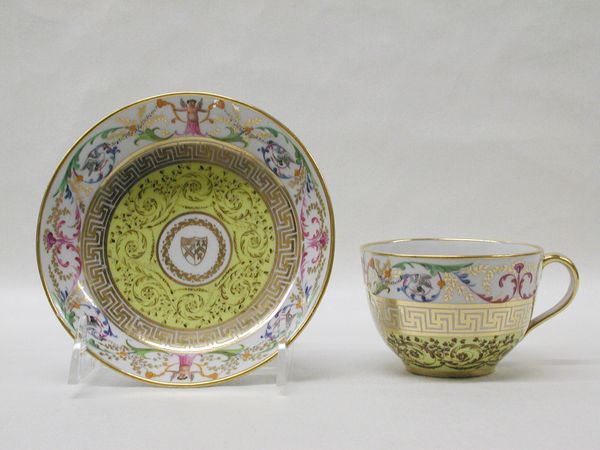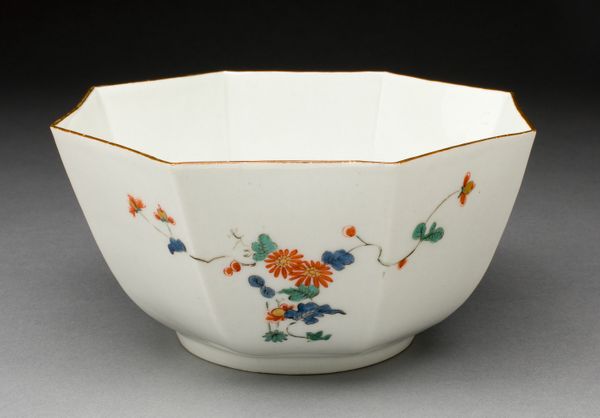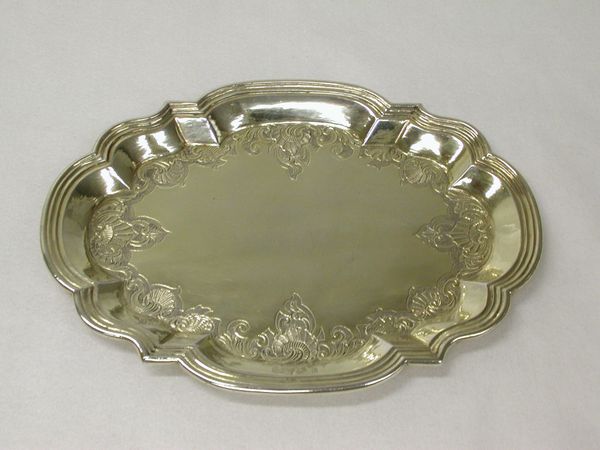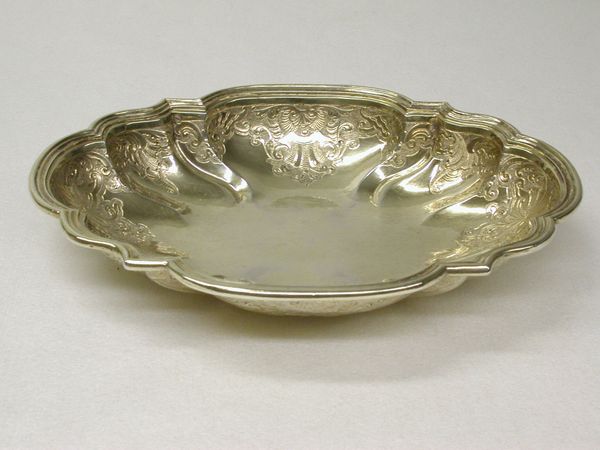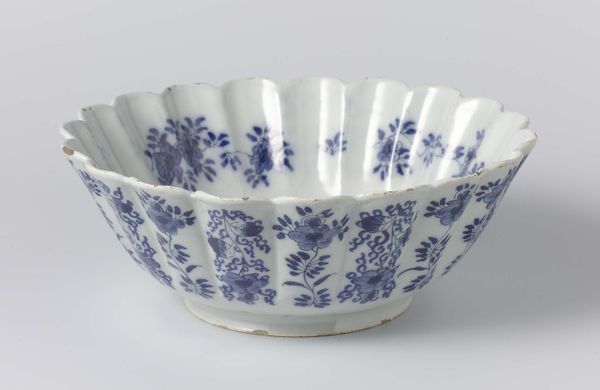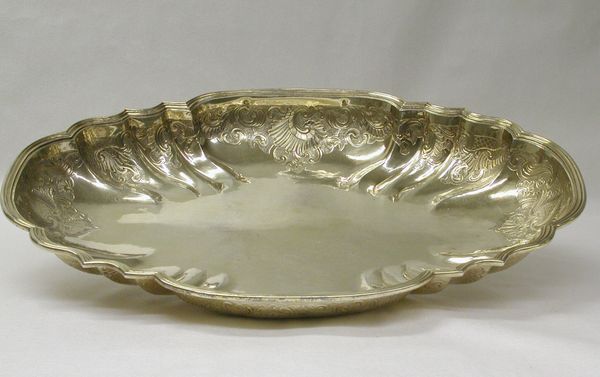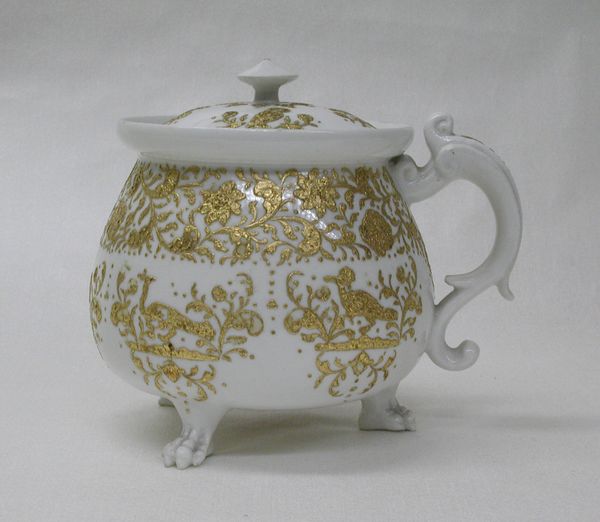
Leaf-shaped dish (part of a service) 1715 - 1725
0:00
0:00
ceramic, porcelain, sculpture
#
ceramic
#
porcelain
#
sculpture
#
ceramic
#
decorative-art
#
rococo
Dimensions: Width: 5 1/8 in. (13 cm)
Copyright: Public Domain
Editor: So, we have here a porcelain leaf-shaped dish, crafted around 1715-1725 by the Meissen Manufactory. The gold detailing is so intricate, almost overpowering. It's… a dish, right? What do you see in this piece? Curator: I see a potent intersection of nature, labor, and luxury. The Meissen Manufactory's attempt to mimic organic forms through inorganic materials – ceramic and gold – reveals a tension. The intense labor involved in creating the porcelain, in firing it and then decorating it with such elaborate gold work... it's all about conspicuous consumption. It transforms an everyday object into something valuable. Does that gold add or distract, do you think? Editor: I see your point. The gold feels a little performative. Were they trying to imitate gold or silver dishes perhaps, but in porcelain? It's less about functionality and more about showing off skill and materials. Curator: Exactly! Think about the social context. Meissen porcelain was prized as a symbol of status and wealth. The labor behind it – the skilled artisans, the mining of materials – is masked by the delicacy and ornamental nature. The natural world becomes a resource, reshaped through human hands for elite pleasure. And in so doing, what of the status of those hands, themselves? Editor: That’s fascinating! I never thought about porcelain in terms of labor and resource extraction before, I’m so used to seeing it as ‘decorative’. Curator: It's a great example of how an object can tell a much larger story about production, value, and society. Editor: I’ll definitely look at decorative art differently now!
Comments
No comments
Be the first to comment and join the conversation on the ultimate creative platform.


